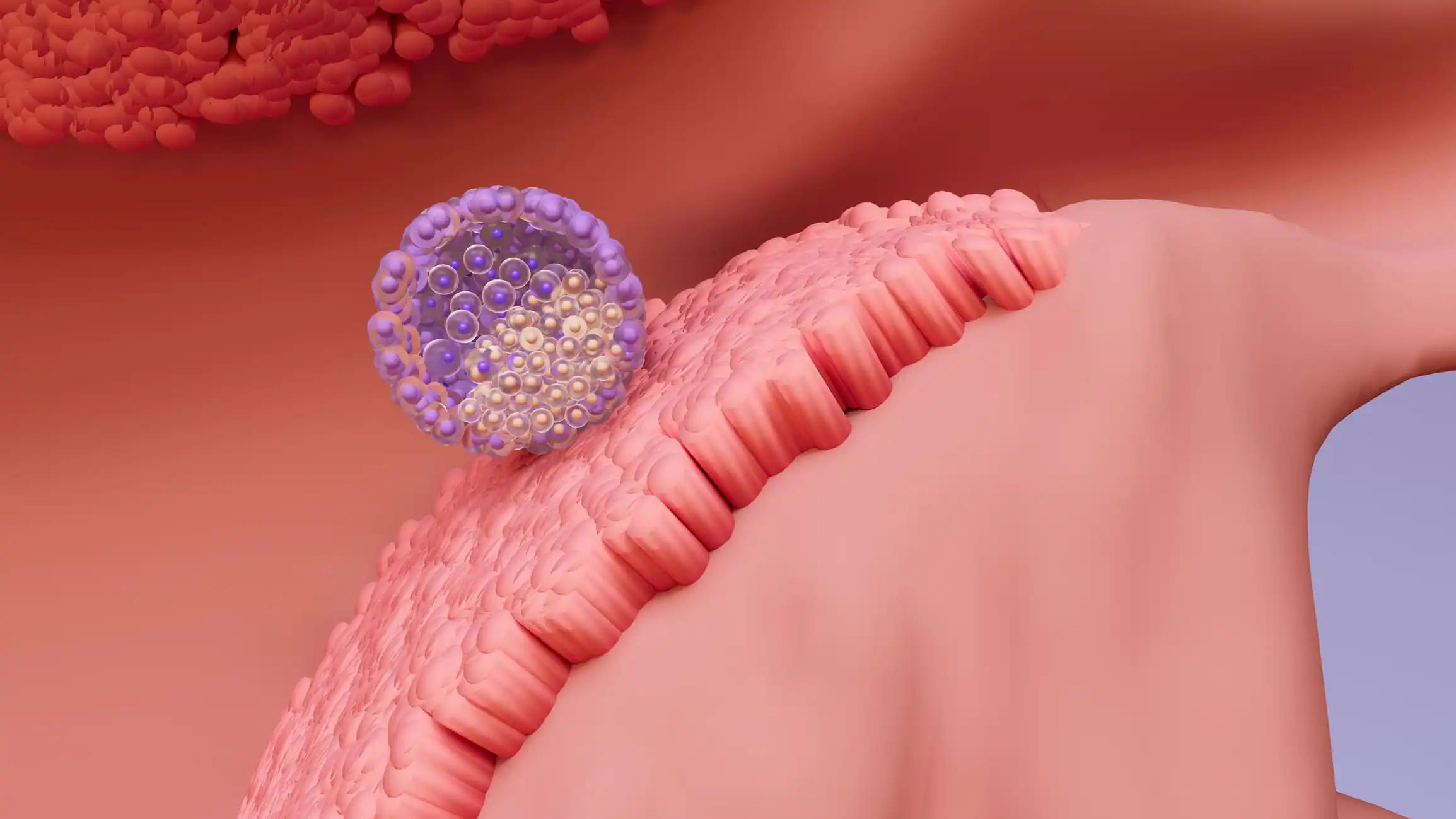KEY TAKEAWAYS
- The EUDARIO phase 2 trial aimed to investigate the impact of PARP inhibitor treatment on CH in WB and plasma of ovarian cancer pts.
- Researchers noticed a significant prevalence of CH in HGOC pts, highlighting its intricate dynamics under carboplatin and PARPi treatment.
Clonal hematopoiesis (CH), marked by somatically mutated hematopoietic stem cell expansion, is linked to hematologic malignancies, heightened cardiovascular risk, and age-related proinflammatory conditions. Solid tumor therapies, specifically cytotoxic treatments, favor clones with mutations in the DNA damage response (DDR) pathway, i.e. TP53, PPM1D, leading to the risk of therapy-related myeloid malignancies (t-MNs). Poly(ADP-ribose) polymerase inhibitors (PARPi), widely used for ovarian cancer, exhibit high efficacy in homologous recombination (HR)-deficient tumors (BRCA1/2 mutations). However, recent data suggest an increased risk of t-MNs with PARPi treatment.
Christopher Maximilian Arends and his team aimed to assess the prevalence and dynamics of CH in relapsed high-grade ovarian cancer (HGOC) patients (pts) under carboplatin and PARPi treatment.
The study performed an inclusive analysis of CH in whole-blood (WB) and plasma from pts with relapsed HGOC undergoing platinum-based chemotherapy and PARPi treatment. The investigation aimed to elucidate the mutational landscape of CH, gene-specific dynamics, and potential interference with putative tumor-derived mutations in cell-free DNA (cfDNA).
Serial specimens from 103 relapsed, platinum-sensitive HGOC pts enrolled in the European Trial on Enhanced DNA Repair Inhibition in Ovarian Cancer (EUDARIO) study (ENGOT-ov48) were examined. Utilizing error-corrected targeted sequencing with a custom panel covering 45 myeloid and 27 HR-related genes, the analysis delved into the intricate details of CH. The study treatment regimen included six cycles of carboplatin-based chemotherapy, followed by maintenance therapy with Niraparib ± the HSP90 inhibitor Ganetespib.
About 56% of the study participants (58 pts) exhibited a total of 128 somatic mutations with variant allele frequencies (VAFs) ≥ 1%, prominently featuring DDR mutations (51 PPM1D mutations in 27 pts and 7 TP53 mutations in 7 pts). Factors such as median age (62 years) and the number of prior therapy lines (median 1, range 1-5 lines) were significantly correlated with the presence of CH. Prior exposure to Poly(ADP-ribose) PARPi treatment strongly correlated with the presence of CH and the number of CH mutations.
CH-positive pts experienced significantly shorter progression-free survival (PFS) (median 7.9 months vs 10.6 months, p = 0.021 in log-rank test) and showed a trend for shorter overall survival (OS) (median 21.1 months vs 27.7 months, P = 0.16) in univariate survival analysis. Regarding adverse events, CH-positive pts had a higher frequency of infections during the study treatment (49% vs 26%, P= 0.025).
Almost all CH mutations with VAF ≥ 1% (excluding 5) were detectable in cell-free DNA (cfDNA), displaying a significant correlation of VAFs (R = 0.84, p < 0.0001). Mutations exclusively present in cfDNA, presumed to be tumor-derived, predominantly featured TP53 -and HR-related mutations, while DNMT3A and PPM1D mutations were infrequent. However, a noteworthy proportion of TP53 mutations (26%) and HR-related gene mutations (32%) in cfDNA were of hematopoietic origin, emphasizing the importance of parallel whole-blood sequencing in liquid biopsies to prevent false positives.
The dynamics of CH clones under carboplatin and PARPi treatment were evaluated in paired whole-blood samples at the initiation and end of treatment (available for 62 patients). Ninety-six clones initially with a VAF < 1% emerged during treatment, including 56 PPM1D- and 10 TP53-mutated clones. In gene-wise comparison, PPM1D- and TP53-mutated clones exhibited significantly higher median clonal fitness than TET2- or DNMT3A-mutated clones. Notably, PPM1D-mutated clones displayed lower fitness during PARPi treatment than carboplatin treatment (p = 0.0015 in Wilcoxon rank sum test), whereas TP53-mutated clones did not.
Finally, 8 samples with multiple mutations underwent single-cell genotyping on the Mission Bio Tapestri platform, revealing preliminary data indicative of clonal exclusiveness among co-occurring DDR mutations.
The results showed a high prevalence of CH in relapsed HGOC, revealing novel insights into clonal architecture and dynamics under carboplatin and PARPi treatment, with a distinct selection of DDR-driven clones. Additionally, interference of CH-derived mutations with tumor-derived mutations in cfDNA is reported.
The study is sponsored by Universitaire Ziekenhuizen KU Leuven
Source: https://ash.confex.com/ash/2023/webprogram/Paper184768.html
Clinical Trial: https://clinicaltrials.gov/study/NCT03783949
Arends C M, Kopp K,Barreras N E, et al. (2023). “Clonal Hematopoiesis in Whole-Blood and Cell-Free DNA of Ovarian Cancer Patients Undergoing PARP-Inhibitor Treatment: An Exploratory Analysis of the ENGOT-ov48/Eudario Trial.” Presented at ASH 2023 (Abstract 1317).



